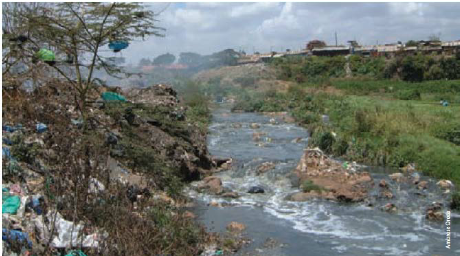Kenya’s cities are facing a silent but deadly crisis: raw sewage. While the country’s urban populations grow at breakneck speed, basic infrastructure has failed to keep pace. Shockingly, only about 20 percent of urban residents are connected to proper sewer systems. For the majority, waste finds its way into open drains, rivers, leaking septic tanks, or poorly managed soak pits.
In many towns, landlords quietly order caretakers to empty septic tanks into storm drains often at night or during heavy rains to avoid detection. The consequences are dire: rivers poisoned with untreated sewage, waterborne diseases spreading unchecked, and the poor bearing the heaviest burden.
Take Kikuyu town, where a sewer line was laid nearly two years ago. Instead of linking to a local treatment plant, the system channels waste into the Nyongara River, a Nairobi River tributary, before it is eventually dumped untreated into the Dandora ponds in Ruai. Along these rivers, farmers grow vegetables with contaminated water, supplying markets with produce laced with harmful bacteria such as E. coli and Salmonella. The result? Rising cases of diarrhoea, typhoid, and intestinal infectionsillnesses that rarely make headlines but claim countless lives.
Yet amid the neglect, community-driven action offers hope. Friends of Ondiri Wetland Kenya (FOWK) have mobilized residents to fight back. In Kikuyu, volunteers conducted night patrols to expose illegal sewage dumping, leading to arrests and better enforcement. They engaged local businesses, promoted eco-toilets, restored riparian zones, and successfully pushed for legal protection of the Ondiri Wetland—the source of the Nairobi River.
But the challenge extends far beyond Kikuyu. The Nairobi River, once a life-giving artery, now flows as a toxic gutter into the Athi River, carrying pollution to the Indian Ocean at Kilifi’s Sabaki estuary. Inland neglect is destroying marine life, threatening fisheries, and undermining coastal livelihoods.
Kenya cannot afford to look away. Sewage management is not just an environmental issue it is a public health emergency. Investing in modern treatment facilities, strict enforcement of pollution laws, and empowering community watchdogs are critical steps. Only then can our rivers be restored, our cities made livable, and our future secured.

